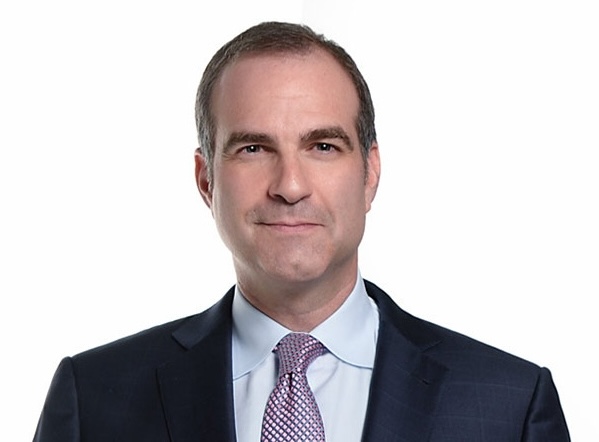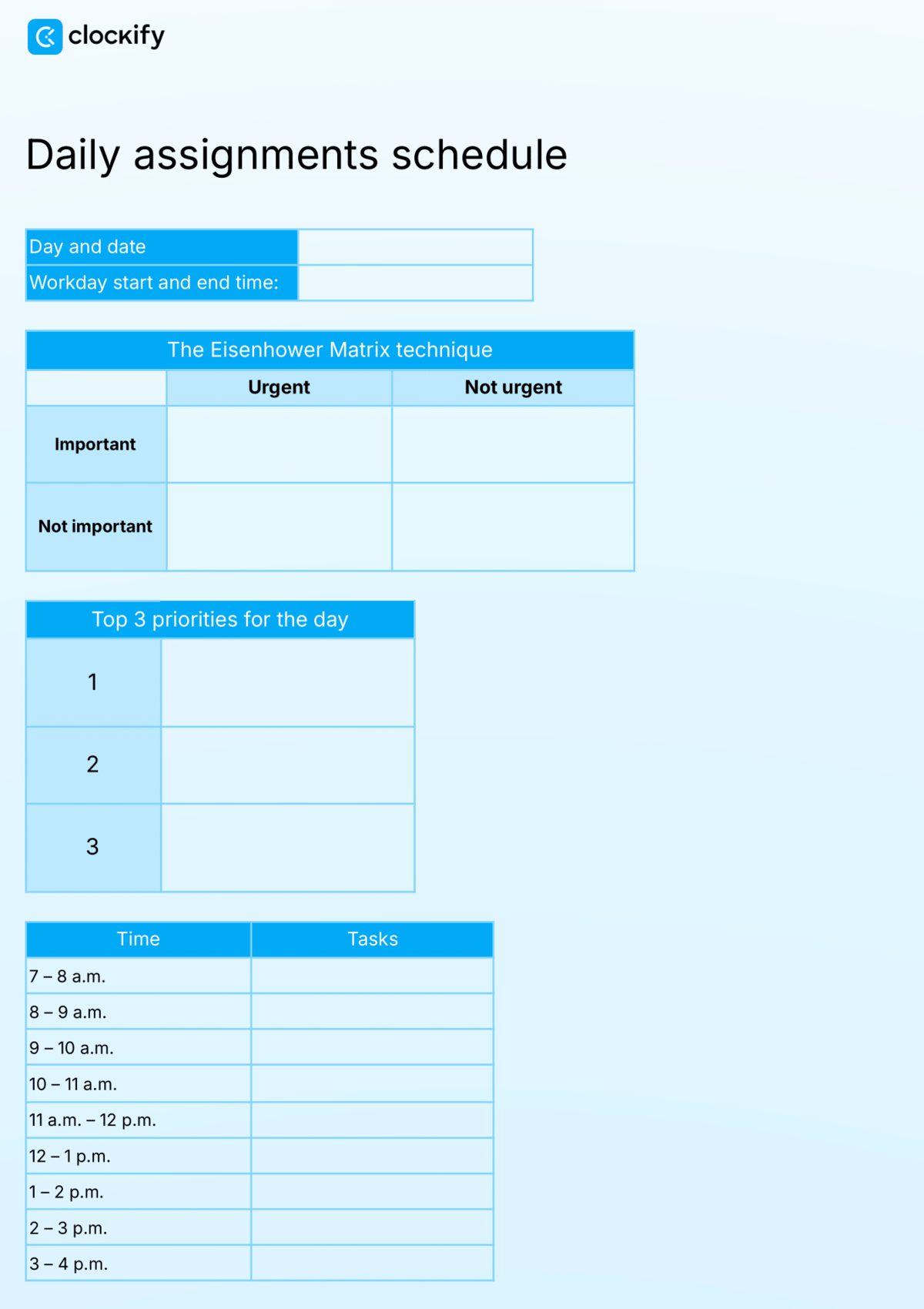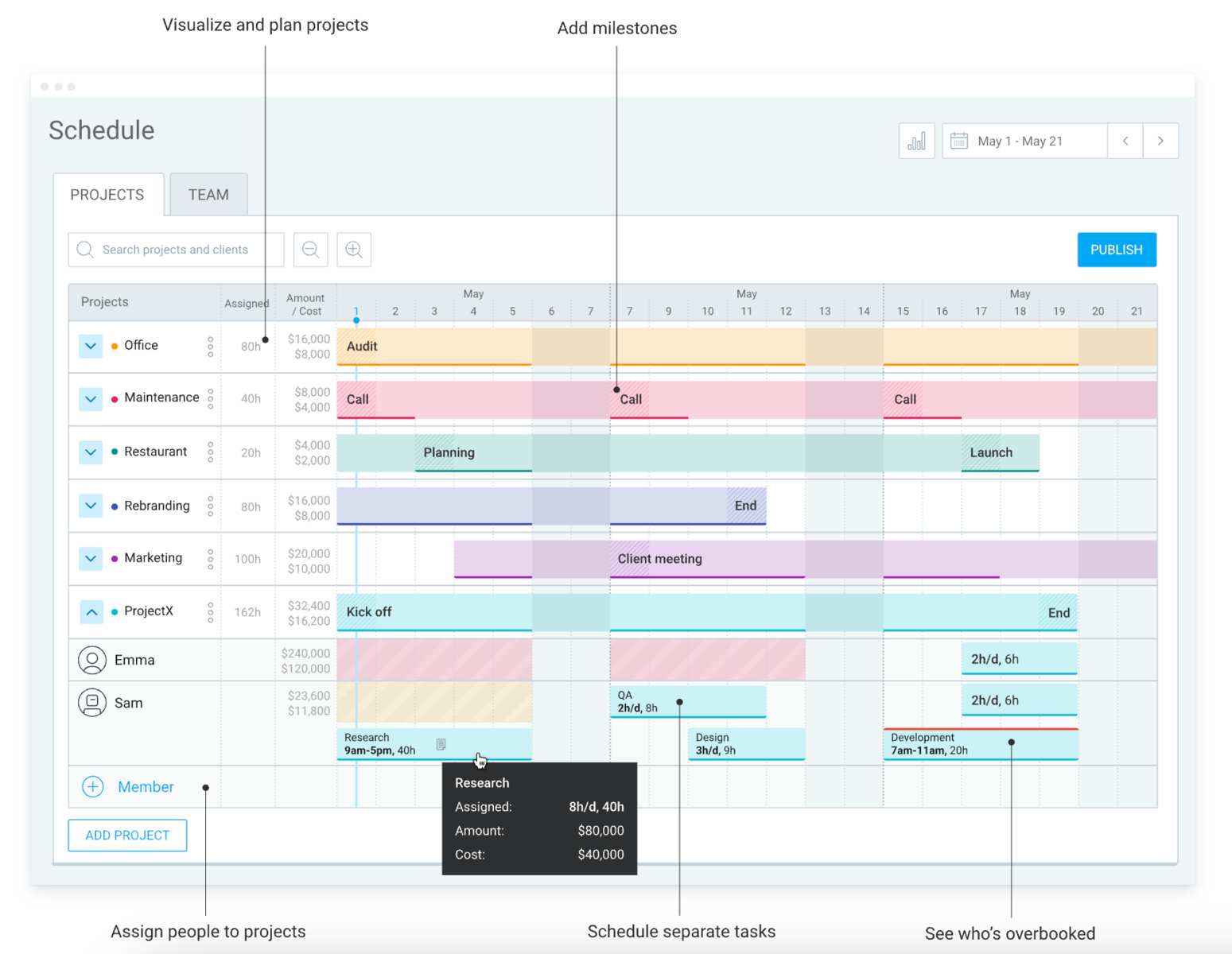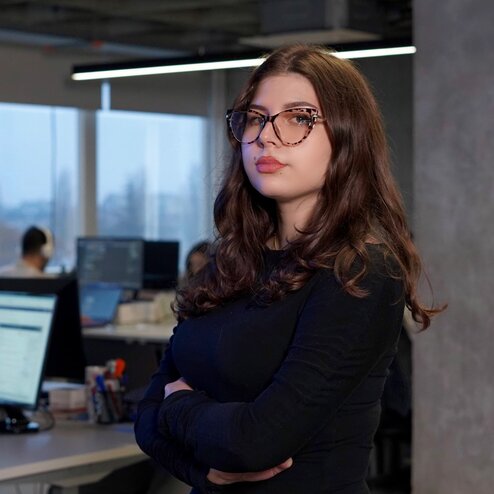You can’t afford to be spontaneous in business, whether you’re managing a team or working alone.
It all requires strategic planning.
To be successful and productive, you’ll need strong planning skills for challenges like resource allocation or personal growth.
In other words, the more complicated it gets, the more crucial planning ahead becomes.
So, let’s explore short-term and long-term planning, discuss their differences, and share practical ways to align them.

Table of Contents
What are short-term and long-term planning?
Short-term planning means setting flexible, temporary goals, while long-term planning outlines broader aspirations that require ongoing effort.
An action plan should combine both types of goals to guide our professional and personal development. For illustration, the 2024 McKinsey Global Survey on resource management showed that businesses that don’t align short-term and long-term goals fail to outperform rivals and grow revenue.
In fact, only 50% of surveyed managers say their companies effectively connect short-term decisions like budgeting with corporate strategies.
Let’s examine why setting short-term and long-term plans matters — and how they differ beyond the time frame. We’ll also cover the concept of a medium-term plan.
Short-term planning
Short-term planning involves defining goals to be met within 12 months or less. Timewise, short-term goals can be further segmented into:
- Daily,
- Weekly,
- Monthly,
- Quarterly, and
- Yearly goals.
But what’s the point of short-term goals? According to Forbes, short-term goals (also called micro goals) can help you maintain a steady streak of small wins. Consistent achievements serve as motivation while you work toward achieving long-term goals.
Similarly, founder Liam Quirk shares a creative interpretation of how short-term objectives lead to lasting success:

“Extraordinary accomplishments come from doing ordinary things for extraordinary periods of time.”
To set short-term goals, you’ll need to evaluate your current situation at work and beyond to identify issues that require immediate fixing. How long that takes will depend on the complexity of the issue.
Reach goals faster with Clockify
Here are some instances of short-term goals, divided into 4 categories:
- Career goals — “Apply for a job” or “Create a website for your business.”
- Academic goals — “Take a project management course” or “Pass the AP Statistics exam.”
- Personal development goals — “Start going to bed before midnight” or “Track your time for a month.”
- Financial goals — “Save for a vacation” or “Get a raise before the end of the year.”
💡 CLOCKIFY PRO TIP
If you need help with setting short-term objectives, check out these articles:
Long-term planning
Long-term planning means creating goals that have multiple steps and take over a year to achieve, often spanning several years. They mark significant milestones for professional and personal growth and require persistent effort and patience.
Although patience isn’t everyone’s strong suit, it’s vital for fulfilling your long-term vision. Mastering these self-management skills can help you overcome daily pressures and keep working on:
- Self-reflection,
- Proper goal setting,
- Time management,
- Stress management,
- Workplace flexibility, and
- Decision making.
To boost strategic thinking, Harvard Business Review recommends balancing 2 work modes:
- Doing mode — the state of focusing your energy on reaching small, measurable goals, and
- Spacious mode — the state of pausing daily chores to reflect on the broader picture (i.e., intangible and less predictable matters).
Now, let’s go over some examples of long-term objectives, divided into 4 categories:
- Career goals — “Build a profitable business” or “Transition into full-time freelancing.”
- Academic goals — “Get a Bachelor’s degree” or “Obtain a Master’s degree abroad.”
- Personal development goals — “Learn a new language” or “See the 7 wonders of the world.”
- Financial goals — “Save for retirement” or “Buy a new house.”
💡 CLOCKIFY PRO TIP
For easier planning, you can use printable goal setting templates to define, organize, and reach your objectives:
Medium-term planning
Medium-term planning involves setting goals that ensure your daily and long-range objectives stay in sync. More specifically, mid-term goals are major checkpoints that guide you toward big-picture goals while managing daily tasks.
Track time spent on tasks with Clockify
For example, in career pathing (the process of planning an employee’s career growth), a manager can set a mid-term goal of holding 1-on-1 meetings with a worker every 2 months to assess their progress.

Here’s an example of a mid-term goal for personal development:
Let’s say you’re tracking time daily and looking to enhance productivity in the long run. As a mid-term goal, you can view reports on your time use every month to pinpoint and eliminate distractions.
Simple time trackers like Clockify can help you succeed with thorough reporting on each tracked activity, as seen below.

The image above illustrates how to generate Clockify reports to show specific data, making it easier to separate productive activities and time wasters.
Application of short-term and long-term planning
Aligning short-term and long-term planning is important for your personal or professional progress. But how do you get started on that?
Let’s look at ways to realize goals in your business and personal life.
Application for work
A project manager may set a short-term goal to “Complete a project in a week.” To reach it, they’ll need to follow a short-term strategy with several steps:
- Discuss project requirements with the client,
- Create a project charter (a blueprint that outlines project details, scope, goals, timeline, responsibilities, and resources),
- Split the project into smaller tasks and set deadlines,
- Delegate tasks to teammates,
- Track project progress in Clockify, and
- Review and finish the project.
Project managers usually focus on long-term goals, like “Consistently deliver projects.” To successfully apply their long-term strategy, they’ll need to take the following actions:
- Build a reliable, skilled team through training,
- Encourage effective communication and team collaboration,
- Hold monthly progress meetings to review ongoing work, and
- Use specialized tools to streamline project management processes.
Application for personal life
Let’s say your personal short-term goal is to “Drink more water daily.” To stay hydrated, your plan strategy should include these practical steps:
- Aim to drink a specific amount of water, like 8 cups per day,
- Keep a reusable water bottle with you,
- Substitute sugary drinks with water,
- Have water during meals,
- Use phone alarms to set reminders and track water intake.
You may set a long-term objective like “Improve mental health” to increase your quality of life. To execute your plan, you’ll need to perform several actions:
- Visit a psychologist regularly,
- Keep a diary of your daily thoughts and feelings,
- Engage in physical activity,
- Follow a consistent sleep schedule, and
- Maintain a healthy diet.
Key differences between short-term and long-term planning
CEO Luke Siegel highlights the most obvious distinctions between short-term and long-term planning — time frame and complexity:

“Short-term goals cover anything from a few days to a quarter. They’re more specific, like launching a campaign or optimizing workflow. Long-term goals span around 1-5 years and are more strategic, such as scaling infrastructure or entering new markets.”
So, long-term planning is more elaborate and involves several steps to success. In contrast, short-term planning is usually straightforward. Micro goals serve as milestones achieved in a short time that bring you closer to your macro goal.
Set project milestones with Clockify
Additionally, Culture and Performance Strategist Louis Carter notes that immediate and future planning fulfill different roles, but are codependent:

“Short-term planning keeps you grounded and focused. It’s about what you can move the needle on today or this week. Long-term planning is your glue — it connects your actions to something meaningful. Without that, it’s easy to get lost in the day-to-day.”
In business, short-term goals mostly deal with internal issues like customer complaints, while long-term goals cover both internal and external issues. In long-term planning, you need to be aware of external factors — like global trends and developments, and their effects on the political and economic climate.
According to Forbes, frequent market disruptions require companies to be highly agile and adaptable. So, anticipating challenges and planning ahead is your recipe for quick recovery in tough economic times, specifically:
- Scenario planning — predicting different future scenarios and testing solutions, and
- Risk mapping — identifying potential business threats and planning preventative measures.
💡 CLOCKIFY PRO TIP
Looking to outperform rivals despite market challenges? Efficient time tracking is your ticket to unwavering growth:
The concept of strategic planning
In business, terms like “planning” and “strategizing” are often used interchangeably. That’s why strategic planning only occurs in corporate contexts.
Track project timelines with Clockify
Based on the 2024 Global Planning Survey, strategic planning incorporates short-term and long-term planning to meet business targets years down the line — like increased customer retention and operational efficiency.
For instance, a small business aiming to enhance productivity could introduce a cost-effective product bundle into its strategic plan — like the CAKE.com Bundle. The bundle includes 3 tools designed to simplify all business processes:
Interestingly, 72% of participants from the survey above said their businesses were equipped for agile planning (dividing big goals into small steps and allowing quick adjustments). However, only about ⅙ of companies continually adapt their strategies for the future.
Without a strategy plan for unpredictable market conditions, you’re liable to major risks and unexpected shocks, like financial losses.
So, if you haven’t already, let these statistics serve as a sign that you should start prioritizing planning for the future.
💡 CLOCKIFY PRO TIP
Want to keep tabs on your ongoing expenses and profits? Your strategy plan should include project forecasting:
How to set long-term goals in 6 steps
Setting long-term goals in your personal and professional life means laying the foundation for your planning process. So, it’s important to get it right.
Founder Darian Shimy offers a glimpse into the complexities of long-term planning:

“Start by envisioning what success looks like 2 to 5 years from now. Then, break that vision into manageable pieces.”
But, making plans for the future can trigger overwhelm and confusion — which is why we prepared this step-by-step guide.
Track time to overcome fatigue
Step #1: Define your vision
First, clearly describe your core long-range objectives.
According to Forbes, you can create your personal vision in a few simple steps:
- Identify what matters most to you — define key values that impact your decisions and actions,
- Pinpoint your passions — consider subjects and activities that you enjoy,
- Set long-term (career) goals — visualize your desired future and define long-term goals accordingly, and
- Write a vision statement — draft a clear statement that combines your values, passions, and long-term goals.
Here’s an example of an IT manager’s vision statement:
“I aim to lead a high-performing team with efficiency and integrity to drive results and digital innovation.”
Defining your company’s vision involves a similar process, but focuses on business goals. To shape your business vision, you’ll need extra information, including:
- What problem do you want to solve?
- What changes do you need to make?
- If (or when) you achieve your goals, how will that impact your industry?
- Where do you see your business in the following years?
For instance, a software company may express its vision like this:
“Empowering clients with innovative digital solutions that streamline workflows and drive growth.”
The above instructions will help you clarify what you wish to achieve. Creating a personal (or company) vision will provide encouragement and clear direction.
The next step is how to get there.
Step #2: Set SMART goals
Once you’ve defined your vision, it’s time to develop goals. Your objectives should be challenging, achievable, and above all — SMART.
Each letter of the SMART acronym represents a goal characteristic that you should consider for continued success. Moreover, these criteria can (and should) be applied to any goal type.
To illustrate the SMART framework, we’ll explain each letter with examples of short-term goals:
- S (Specific): Precise and well-defined goals, e.g., “Land a _____ position in ____ field, in ____ type of company, in ____ area.”
- M (Measurable): Measurable goals can display and track your progress, e.g., “Gain 5K followers on Instagram.”
- A (Attainable): Realistic goals that are possible to achieve in terms of time, money, and skill, e.g., “Cut administrative costs by 10% in 6 months by automating HR processes.”
- R (Relevant): Important goals that fit your vision. If you want to be a lawyer, a relevant goal for your career path would be to “Graduate from law school.”
- T (Time-bound): Time-specific goals give you a certain time frame to reach success. If your goal has multiple steps, impose a deadline for each milestone.
Set task deadlines with Clockify
Step #3: Use Key Performance Indicators (KPIs)
Performance tracking helps businesses make informed decisions while chasing goals.
Business owner Lonnie Jones explains the importance of concrete metrics like KPIs for measuring progress:

“KPIs keep us grounded. In the short term, they help us measure productivity and profitability. Long term, they tell us if the business is moving in the right direction. They’re not just metrics, they’re how we course-correct and stay focused.”
For example, Harvard Business School lists the top 7 marketing KPIs for measuring success:
- Impressions — the number of times your content is viewed,
- Search engine rankings — your content’s position on the results page of Google and other search engines,
- Click-through rate — a metric showing how many people click on your ad vs. how many see it,
- Cost per click — a sum you pay each time someone clicks on your paid ad,
- Conversion rate — the percentage of people who take action after seeing your ad, e.g., buy your product,
- Customer acquisition cost — the total amount you spend to get a new customer (the lower the cost is, the more efficiently you’re acquiring clients), and
- Return on investment — a metric showing your overall ad performance (i.e., generated profits vs. total costs).

💡 CLOCKIFY PRO TIP
If you’re interested in tracking employee performance, our pre-made templates can help you get the necessary estimates:
Step #4: Break down goals into smaller ones
After you define SMART goals, you’ll need to break them down into smaller chunks, which you’ll further divide into a series of actionable steps.
Here’s how it looks in practice.
Big goals often consist of a few milestones, each one representing a short-term or medium-term goal. Like levels in a game, you’ll have to pass them to cross the finish line.
Keep splitting your long-term goal into manageable tasks until it resembles a weekly or daily to-do list. The more complicated the objective is, the more times you’ll have to break it down into smaller parts.
Split projects into tasks with Clockify
Let’s say you just got into university. Your main objective is to obtain a Bachelor’s degree.
First, you’ll divide it into 3-4 goals (based on how many years it takes): “Finish first year,” “Finish second year,” and so on.
To achieve them, you’ll need to pass exams, each of which will represent subgoals.
To pass every exam, you’ll have to:
- Take quizzes,
- Write papers,
- Hold presentations, etc.
Therefore, each of these pre-requirements will set off another chain of subgoals.
Finally, you’ll divide those into concrete tasks. For instance, writing a paper will include:
- Doing research,
- Writing the first draft,
- Editing, etc.
With effective goal-tracking apps like Clockify, you can stay goal-oriented while completing tasks.

As the image shows, Clockify lets you automatically track daily activities and attach them to specific projects (or goals).
Taking smaller steps will make your long-term goal appear achievable and eliminate your fear of failure — raising your chances of success.
Step #5: Prioritize and review
Next, go through your list of goals and rank them by priority. Doing so will simplify setting short-term goals and organizing your time, energy, and resources around them.
First, focus on the most impactful goal that best aligns with your values.
To do that, apply the Eisenhower Matrix method. It depicts a table with 4 quadrants that help you categorize tasks (or goals) by urgency and priority as:
- Important,
- Unimportant,
- Urgent, and
- Non-urgent.
Below is a daily schedule template that incorporates the Eisenhower Matrix and a list of the top 3 priorities to help you closely determine long-term goals. It also has a timetable to help you define everyday tasks (or short-term goals).

⬇️ Download the Daily assignments schedule template (Google Docs)
While weighing your priorities, you may ask yourself: Which is more important, short-term or long-term planning?
Well, both are equally essential for stable, ongoing success. A well-structured plan that links actionable goals to your long-term vision keeps you committed and productive. Balancing short-term and long-term planning means completing effective daily activities that lead to a meaningful outcome.
Newsflash: Goals and priorities may change over time. You may develop new aspirations or simply give up on a goal.
For that reason, you should regularly check your list to ensure it reflects your current ambitions and make changes, if necessary.
Step #6: Engage your team
Managers should regularly remind employees of their shared goal to boost team cohesion and motivation.
All team members should be mindful of the objectives they collectively pursue. To strengthen teamwork and inspire productivity, managers should promote transparent communication and a growth-focused environment.
💡 CLOCKIFY PRO TIP
Sometimes, teammates can lose sight of the big picture, feeling disengaged. Guide and empower your employees with a team performance plan:
Balance short-term and long-term planning with Clockify
Together, short-term and long-term planning provide us with purpose, direction, and motivation.
Still, many people struggle to stick to their goals once they encounter obstacles, like a lack of motivation or fear of failure.
So, you’re best off with an all-in-one goal-tracking app that eliminates doubts and inspires progress — like Clockify by CAKE.com.
Besides one-click time tracking, our cost-effective tool allows you to track different milestones effortlessly — from daily business targets to long-term career goals.
Our app’s versatile features can help manage your goals in any aspect of life or business, from beginning to end.
To kick off your goal-management journey, you can use 2 features:
- Projects — create a project that will represent your long-term goal. Then, add tasks for the project to split it into manageable pieces (i.e., short-term goals).
- Scheduling — plan projects and tasks to create your project timeline. Then, set milestones at different phases or dates within your project to mark deadlines and boost motivation.

To measure your project progress by numbers, open the Projects page and define time (and budget) estimates.
After that, you can view reports in Clockify to see how you spend time to meet targets and spot inefficiencies. For instance, the assignments report compares estimated vs. tracked time per task, helping you make informed decisions about future planning.
Quick business tip: Integrating Clockify with Asana or other project management tools lets you create tasks via the browser extension — just remember to enable it in the settings.
While exploring our app’s functionalities, don’t hesitate to contact our 24/7 support team for technical questions or advice. Qualified users can also count on a dedicated success representative.
When short-term actions are aligned with long-term vision, planning becomes not just productive — but powerful.


